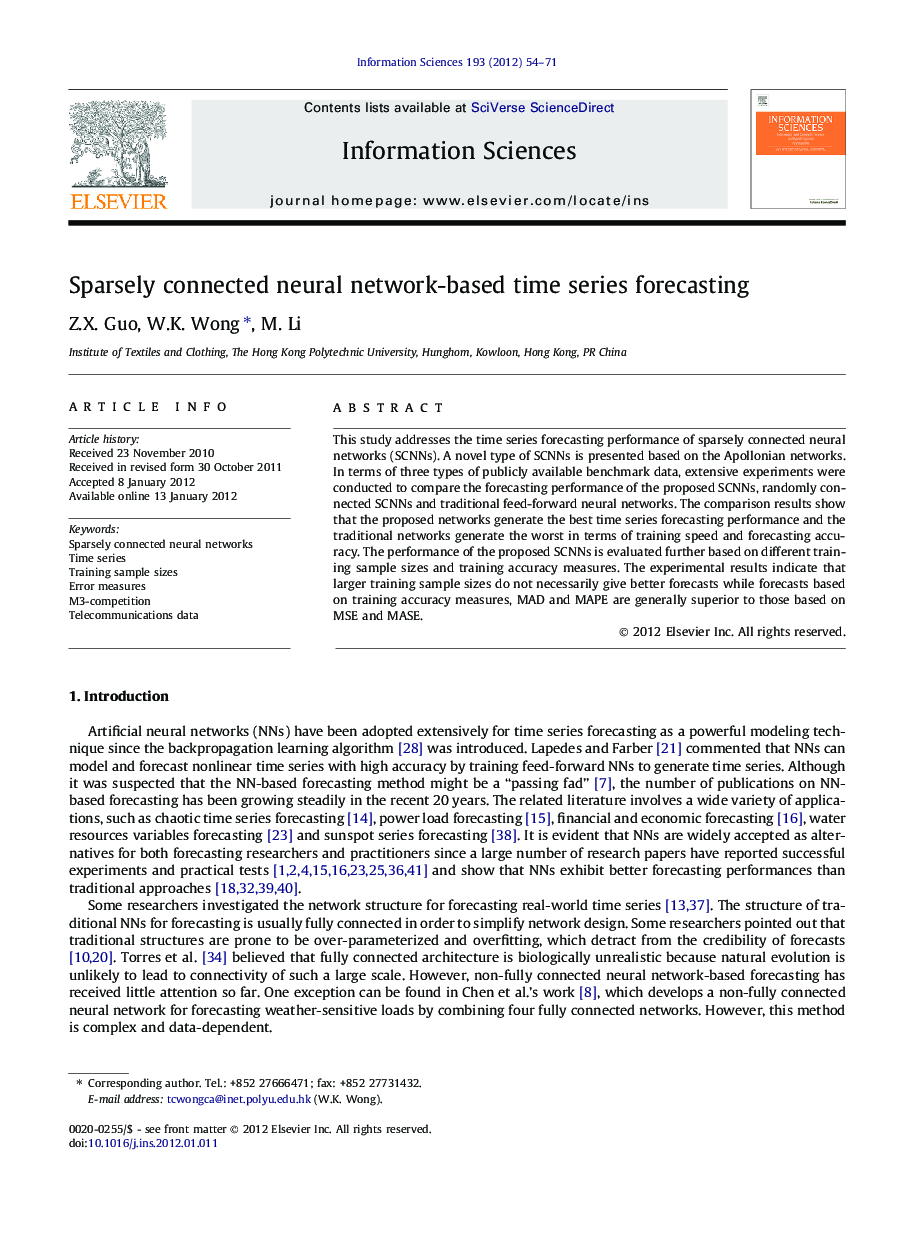| Article ID | Journal | Published Year | Pages | File Type |
|---|---|---|---|---|
| 393355 | Information Sciences | 2012 | 18 Pages |
This study addresses the time series forecasting performance of sparsely connected neural networks (SCNNs). A novel type of SCNNs is presented based on the Apollonian networks. In terms of three types of publicly available benchmark data, extensive experiments were conducted to compare the forecasting performance of the proposed SCNNs, randomly connected SCNNs and traditional feed-forward neural networks. The comparison results show that the proposed networks generate the best time series forecasting performance and the traditional networks generate the worst in terms of training speed and forecasting accuracy. The performance of the proposed SCNNs is evaluated further based on different training sample sizes and training accuracy measures. The experimental results indicate that larger training sample sizes do not necessarily give better forecasts while forecasts based on training accuracy measures, MAD and MAPE are generally superior to those based on MSE and MASE.
